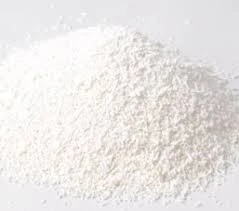
Preserving Freshness in Frozen Food with Effective Additives and Techniques
The Role of Preservatives in Frozen Food
Frozen foods have become a staple in households around the globe due to their convenience, extended shelf life, and ease of preparation. However, the preservation of these foods is a nuanced process that often relies on various preservatives to maintain flavor, texture, and nutritional value during the freezing process and throughout storage. This article explores the types of preservatives commonly used in frozen foods, their safety, and their impact on the food industry and consumer health.
Understanding Preservatives
Preservatives are substances added to food products to prevent spoilage caused by microorganisms, oxidation, and other degradation processes. In the context of frozen foods, preservatives can include chemicals that inhibit the growth of bacteria, mold, and yeast, as well as antioxidants that protect against rancidity and loss of flavor.
There are two main categories of preservatives natural and synthetic. Natural preservatives, such as salt, sugar, vinegar, and certain essential oils, are derived from natural sources and have been used for centuries in food preservation. Synthetic preservatives, on the other hand, are chemically synthesized compounds that offer effective preservation but have sparked debates about their safety and long-term health effects.
Common Types of Preservatives in Frozen Foods
1. Antimicrobials These preservatives inhibit the growth of bacteria, molds, and yeasts. Common antimicrobials include propionic acid and sorbic acid, which are frequently used in baked goods and dairy products. In frozen foods, these preservatives help maintain safety and extend shelf life.
2. Antioxidants To prevent the oxidative deterioration of fats and oils, which can lead to off-flavors and rancidity, antioxidants like BHT (butylated hydroxytoluene) and BHA (butylated hydroxyanisole) are used. These compounds help preserve the taste and nutritional quality of frozen foods, especially those rich in fats.
frozen food preservatives

3. Coloring Agents Color is an essential aspect of consumer appeal in frozen foods. Preservatives that also serve as coloring agents help maintain the vibrant appearance of frozen fruits and vegetables. Examples include beet juice powder and annatto, which provide natural coloring without compromising food safety.
4. Enzymes Some enzymatic treatments can preserve the quality of frozen foods by preventing browning and maintaining texture. For instance, blanching vegetables before freezing inactivates enzymes that can lead to nutrient loss and color changes.
Safety Concerns and Regulations
While preservatives play a crucial role in extending the shelf life of frozen foods, concerns about their safety have led to increased scrutiny. Regulatory agencies such as the U.S. Food and Drug Administration (FDA) and the European Food Safety Authority (EFSA) have established acceptable daily intake levels for various preservatives and conduct ongoing reviews to ensure consumer safety. The key is to use these substances within regulated limits to minimize health risks while allowing food manufacturers to deliver safe products.
Moreover, consumer preferences are shifting towards cleaner-label foods that contain fewer synthetic ingredients. This trend has prompted manufacturers to seek natural alternatives and redesign formulations to meet the demand for organic and preservative-free options.
Impact on the Food Industry and Consumer Choices
The use of preservatives in frozen foods not only affects product safety and quality but also influences market trends and consumer choices. With the growing awareness about health and nutrition, brands are increasingly highlighting the absence of artificial preservatives in their products. This shift encourages innovation within the industry as companies strive to balance efficacy and consumer preferences.
In conclusion, preservatives play a critical role in the frozen food industry, ensuring safety, extending shelf life, and preserving flavor and nutritional value. While there are valid concerns regarding their use, regulatory bodies closely monitor their safety. As consumer demand evolves, the industry continues to adapt, exploring natural alternatives and cleaner-label options, reflecting the growing emphasis on health consciousness among consumers. Ultimately, the future of frozen food preservation lies in striking a balance between safety, quality, and consumer expectations.
-
Buy High-Quality Trichloroisocyanuric Acid for Sale | TCCA 90% SupplierNewsAug.30,2025
-
Pure Sodium Dichloroisocyanurate Dihydrate | Powerful DisinfectantNewsAug.29,2025
-
Industrial Chemicals: Quality & Purity for Every IndustryNewsAug.28,2025
-
Nitrile Rubber Honoring Strict Production StandardsNewsAug.22,2025
-
Aspartame Ingredients Honoring Food Safety ValuesNewsAug.22,2025
-
Fertilizer for Balanced Plant NutritionNewsAug.22,2025
-
Cyanide Gold Processing with High Purity AdditivesNewsAug.22,2025
Hebei Tenger Chemical Technology Co., Ltd. focuses on the chemical industry and is committed to the export service of chemical raw materials.
-

view more DiethanolisopropanolamineIn the ever-growing field of chemical solutions, diethanolisopropanolamine (DEIPA) stands out as a versatile and important compound. Due to its unique chemical structure and properties, DEIPA is of interest to various industries including construction, personal care, and agriculture. -

view more TriisopropanolamineTriisopropanolamine (TIPA) alkanol amine substance, is a kind of alcohol amine compound with amino and alcohol hydroxyl, and because of its molecules contains both amino and hydroxyl. -

view more Tetramethyl Thiuram DisulfideTetramethyl thiuram disulfide, also known as TMTD, is a white to light-yellow powder with a distinct sulfur-like odor. It is soluble in organic solvents such as benzene, acetone, and ethyl acetate, making it highly versatile for use in different formulations. TMTD is known for its excellent vulcanization acceleration properties, which makes it a key ingredient in the production of rubber products. Additionally, it acts as an effective fungicide and bactericide, making it valuable in agricultural applications. Its high purity and stability ensure consistent performance, making it a preferred choice for manufacturers across various industries.





